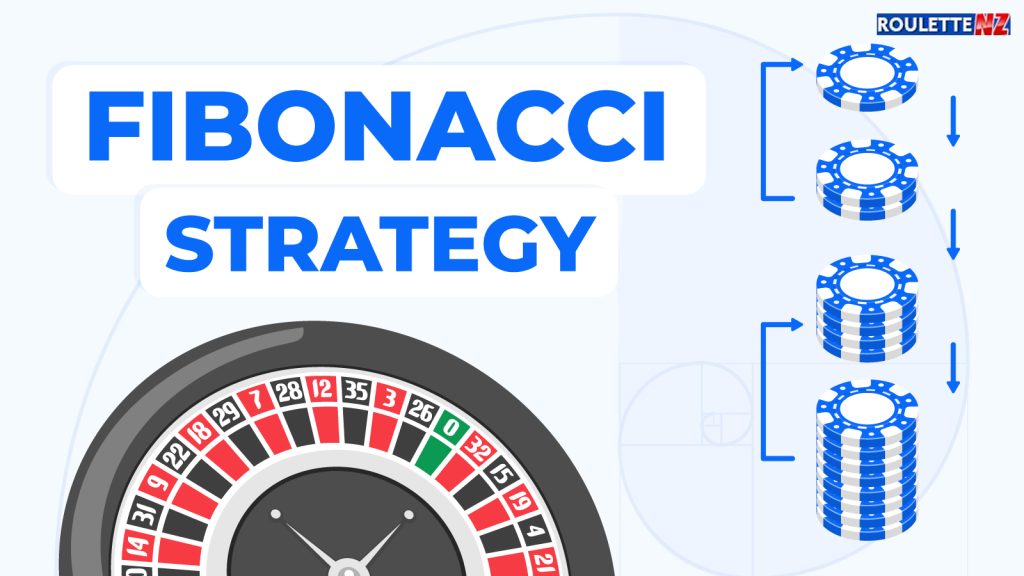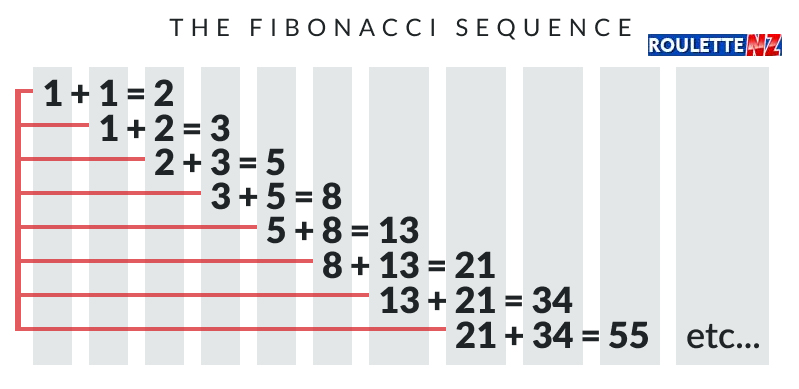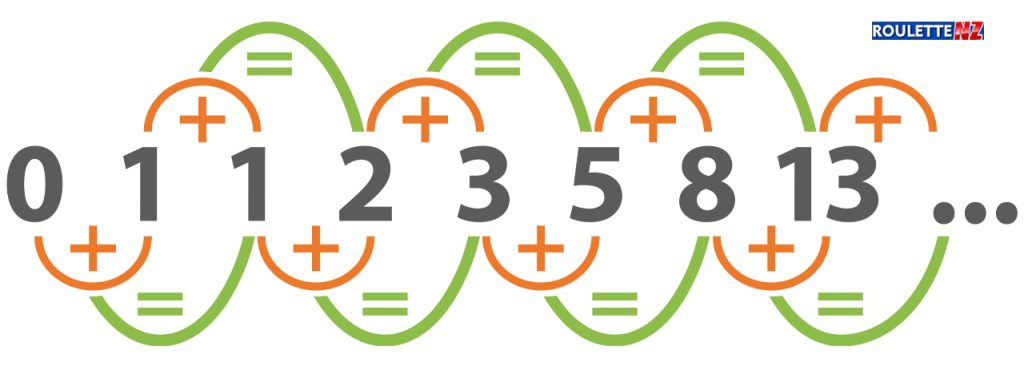Fibonacci Roulette Strategy
The Fibonacci sequence roulette is a famous mathematical pattern that has fascinated mathematicians, scientists, and artists for centuries. But did you know this intriguing sequence can also be applied to gambling – specifically, the game of roulette? The Fibonacci roulette strategy is a simple yet effective betting system that can help players manage their bankroll and potentially eke out small wins in the short term.
At its core, the Fibonacci roulette strategy is based on following the natural progression of the Fibonacci betting system when placing bets. By adjusting bet sizes according to this sequence, players can slowly recoup losses and capitalize on winning streaks. While it’s not a surefire way to beat the online casino in the long run, the Fibonacci system is a low-risk approach that can be a useful tool in any roulette player’s arsenal.

In this article, we’ll dive deep into the mechanics of the Fibonacci roulette strategy. We’ll start by exploring the Fibonacci online roulette system itself and how it can be adapted for gambling. Then, we’ll walk through step-by-step examples of applying the system at the roulette table. Finally, we’ll discuss both the advantages and potential drawbacks of using the standard Fibonacci strategy when playing roulette. By the end, you’ll have a solid understanding of how to master this classic betting system and potentially boost your roulette winnings.
What is the Fibonacci Sequence?
Before we dive into applying the Fibonacci sequence to roulette, let’s first take a closer look at this fascinating mathematical pattern. The Fibonacci sequence was developed by the Italian mathematician Leonardo of Pisa, also known as Fibonacci, in the 13th century.
The sequence works as follows: each number in the sequence is the sum of the two preceding numbers. It typically starts with 0 and 1, and then continues with 1, 2, 3, 5, 8, 13, 21, 34, and so on.
So the progression looks like this:
- 0, 1, 1, 2, 3, 5, 8, 13, 21, 34, 55, 89, 144, and so on.
The beauty of the Fibonacci sequence is that each new number is the sum of the previous two. This creates a natural, flowing pattern that appears frequently in nature, from the spirals of seashells to the branching of trees.
For roulette players, the Fibonacci sequence provides a simple, logical framework for managing bets and bankroll. By aligning bet sizes with the numbers in the sequence, players can systematically increase or decrease their wagers in response to wins and losses. This is the foundation of the Fibonacci roulette strategy, which we’ll explore in more detail next.
Applying the Fibonacci Sequence to Roulette
Now that we understand the basics of the Fibonacci sequence, let’s look at how this mathematical pattern can be used as a betting strategy for the game of roulette.

The key to applying the Fibonacci sequence of numbers to roulette is to focus on the even-money bets. These are the roulette wagers that have roughly a 50% chance of winning, such as red/black, odd/even, and high/low. The even-money bets are ideal for the Fibonacci system because they allow you to double your money on a win, which is essential for recouping losses.
Here’s how you would use the Fibonacci sequence when betting on roulette:
- Determine your base betting unit. This could be $1, $5, $10, or any other amount you’re comfortable with.
- Begin by placing a bet equal to the first number in the Fibonacci sequence – 1 betting unit.
- If you lose the bet, move to the next number in the sequence and bet that amount. For example, if you started with a $5 bet and lost, your next bet would be $5 again.
- Keep following the Fibonacci sequence, increasing your bet size after each loss. So the negative progression might look like this: $5, $5, $10, $15, $25, $40, $65, etc.
- If you win a bet, go back to the beginning of the Fibonacci sequence and start over with your base betting unit.
The genius of the Fibonacci roulette strategy is that it allows you to slowly recoup your losses while limiting your risk. By incrementally increasing your bets after losses, you’re able to eventually win back what you’ve lost, plus a small profit. And when you do hit a winning streak, you can quickly reset your bets back to the base level.
Of course, as with any betting system, the reverse Fibonacci strategy is not a surefire way to beat the casino. But when used responsibly within your bankroll limits, it can be an effective tool for managing your roulette play.
Advantages of the Fibonacci Roulette Strategy
The Fibonacci european roulette strategy offers several key advantages that make it an appealing approach for many players:
Low Risk Nature
One of the biggest benefits of the Fibonacci system is its relatively low-risk profile. By betting in small increments and following a defined sequence, players are able to limit their potential losses. Even after a string of losses, the next bet size in the Fibonacci progression is still manageable. This helps prevent players from going on tilt or chasing losses.

Gradual Recovery of Losses
The structure of the reverse Fibonacci roulette strategy allows players to slowly recoup their losses. When you win a bet, you return to the beginning of the sequence, effectively wiping out the previous losses. This gradual recovery process can be psychologically comforting and helps players maintain discipline.
Simplicity of the System
Compared to more complex roulette betting strategies, the Fibonacci system is refreshingly straightforward. Players simply need to remember the sequence and adjust their bets accordingly. There’s no need for advanced calculations or complex bet placement. This makes the Fibonacci system easy to learn and implement.
Suitability for Even-Money Bets
As mentioned earlier, the Fibonacci strategy works best with even-money american roulette bets, which have a close to 50% chance of winning. These bets allow players to double their money on a win, which is crucial for recouping losses. The even-money nature of these wagers also aligns well with the incremental betting approach of the Fibonacci system.
Potential Drawbacks
While the Fibonacci roulette strategy offers several advantages, it’s important to also be aware of its potential drawbacks:
Need to Remember the Sequence
One of the key requirements of the Fibonacci system is the ability to correctly recall the sequence of numbers. If you lose track of where you are in the progression, it can throw off the entire strategy. This means players need to either memorize the sequence or have it written down for reference.
Risk of Large Losses
Despite the low-risk nature of the Fibonacci system, there is still the potential for significant losses, especially after a long losing streak. As the bet sizes increase exponentially through the sequence, the amount of money required to recoup losses can become quite substantial. This can be daunting for players with limited bankrolls.
Potential for Emotional Mistakes
The psychological aspect of gambling can also pose a challenge when using the Fibonacci system. After a string of losses, players may be tempted to deviate from the sequence or increase their bets beyond their comfort level in a desperate attempt to recoup their losses. This emotional decision-making can undermine the strategy and lead to even greater losses.

Conclusion
The Fibonacci roulette strategy is a classic betting system that can be a valuable tool in any player’s arsenal. By aligning bet sizes with the natural progression of the Fibonacci sequence, players can adopt a disciplined, low-risk approach to the game of roulette.
The key advantages of the Fibonacci system include its inherent risk management, the ability to gradually recoup losses, and the simplicity of the betting structure. When used responsibly and within your bankroll limits, the Fibonacci strategy can help you eke out small wins and minimize the impact of losing streaks.
However, it’s important to remember that the Fibonacci system is not a surefire way to beat the casino in the long run. The house edge will ultimately prevail, and a prolonged losing streak can still lead to substantial losses. Additionally, the need to accurately track the Fibonacci sequence and the potential for emotional decision-making can present challenges for some players.
Ultimately, the Fibonacci roulette strategy should be viewed as one tool in your overall gambling toolkit. By understanding its mechanics, advantages, and drawbacks, you can determine if it’s a good fit for your playing style and risk tolerance. Paired with sound money management principles and a level-headed mindset, the Fibonacci system can be a useful component of your roulette betting strategy.
FAQs
How does the Fibonacci sequence work?
The Fibonacci sequence is a mathematical pattern where each number is the sum of the two preceding numbers. It typically starts with 0 and 1, then continues with 1, 2, 3, 5, 8, 13, 21, and so on. This sequence forms the basis for the Fibonacci roulette strategy.
What bets work best with the Fibonacci system?
The Fibonacci roulette strategy is designed to work best with even-money bets, which have roughly a 50% chance of winning. This includes bets like red/black, odd/even, and high/low in roulette. These bets allow you to double your money on a win, which is crucial for recouping losses.
How do you actually apply the Fibonacci sequence to roulette betting?
To use the Fibonacci system, you start by determining your base betting unit (e.g. $5). You then place a bet equal to the first number in the Fibonacci sequence (1 unit, or $5). If you lose, you move to the next number in the sequence (1 unit again, or $5). If you lose that, you bet the next Fibonacci number (2 units, or $10). You continue this pattern, increasing your bet size after losses and resetting to the beginning of the sequence after a win.
What are the advantages of the Fibonacci roulette strategy?
The main advantages include the low-risk nature of the system, the ability to gradually recover losses, the simplicity of the betting structure, and the suitability for even-money roulette bets.
Are there any downsides to using the Fibonacci system?
Potential drawbacks include the need to accurately remember the Fibonacci sequence, the risk of large losses after a long losing streak, and the fact that it's not a guaranteed way to beat the casino in the long run. Emotional mistakes can also undermine the strategy.
Is the Fibonacci roulette strategy a good way to make money?
The Fibonacci system can be a useful tool for managing your bankroll and potentially booking small wins in the short term. However, it does not overcome the house edge, so it cannot be relied upon as a surefire way to consistently profit from roulette in the long run. It should be used responsibly as part of a broader betting approach.